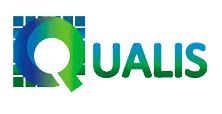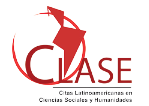Application Profile for Structured Summaries (PARE)
DOI:
https://doi.org/10.5433/1981-8920.2021v26n1p483Keywords:
Structured abstracts, Information retrieval, Electronic scientific journal.Abstract
Introduction: The abstract represents the precise, synthetic and selective version of the text of the document; therefore, it should contain the most important elements. Thus, it is necessary that the abstract is made in an itemized manner, in which the set of elements clearly and reliably translates the content of the article.
Objective: To propose a metadata application profile for the description of elements of the structured abstract in the domain of scientific articles published in electronic scientific journals.
Methodology: Exploratory analysis with a qualitative approach. The research was carried out in the literature of the General Medicine area and in the Information Science area. In the medical literature, which already uses structured abstracts, articles were searched in the Medical Literature Analysis and Retrieval System Online (MEDLINE) and Latin American and Caribbean Literature on Health Sciences (LILACS) databases. In the area of Information Science, the documentary research was carried out from the survey of journals qualified by Capes, quadrennium 2013-2016, having as sample 72 titles in the area of Information Science and the first 15 titles presented in the InCites Journal Citation Reports (JCR) ranking and stratified by Capes. As research instruments were used: Capes Extract for journals in the area of Information Science and the InCites Journal Citation Reports (JCR) tool for journals in the area of General Medicine.
Results: It presents the Proposed Application Profile for Structured Abstracts (PARE).
Conclusion: The abstract should mirror the information contained in the articles and should be systematically constructed so that readers can: identify relevant points of interest that are scientifically based; have a structure that concisely presents the results of research; and search for more accurate search engines.
Downloads
References
ARRAIZA, P. M.; GONÇALEZ, P. R. V. A.; VIDOTTI, S. A. B. G. Recomendações para a integração de publicações ampliadas em repositórios digitais confiáveis. Encontros Bibli, Florianópolis, v. 24, n. 55, p. 1-23, maio 2019. Disponível em: https://periodicos.ufsc.br/index.php/eb/article/view/1518-2924.2019.e58556 Acesso em: 8 fev. 2020
ASSOCIAÇÃO BRASILEIRA DE NORMAS TECNICAS. NBR 6028: Informação e documentação: Resumo: Apresentação. Rio de Janeiro. 2003
BORKO, H. Information science: what is it? American Documentation, v. 19, n. 1, p. 3-5, 1968.
BRITO, R. F. Guia do usuário OJS 3. Brasília: IBICT, 2018. Disponível em: https://remgads.uerr.edu.br/public/site/Manual_OJS_IBICT_OJS_3_2018.pdf > Acesso em: 7 fev. 2020.
COORDENAÇÃO DE APERFEIÇOAMENTO DE PESSOAL DE NÍVEL SUPERIOR. Disponível em: http://cotic.ufrrj.br/acesso-aos-periodicos-da-capes/ Acesso em: 16 dez. 2020.
CUNHA, M. B.; CAVALCANTI, C. R. O. Dicionário de Biblioteconomia e Arquiovologia. Brasília. Briquet de Lemos, 2008.
DUBLIN CORE METADATA INITIATIVE. DCMI grammatical principles. 2012. Disponível em: https://www.dublincore.org/specifications/dublin-core/grammatical-principles/. Acesso em: 13 nov. 2019.
DUBLIN CORE METADATA INICIATIVE. DCMI metadata terms. 2012. Disponível em: http://dublincore.org/documents/dcmi-terms Acesso em: 5 jan. 2020.
DUBLIN CORE METADATA INICIATIVE. The Singapore Framework for Dublin Core Aplication Profiles, 2008 . Disponível em: https://www.dublincore.org/specifications/dublin-core/singapore-framework/ Acesso em: 5 jan. 2020.
ENDRES-NIGGEMEYER, B. Summarizing information. Berlin. Springer, 1988.Disponível em: https://link.springer.com/content/pdf/10.1007%2F978-3-642-72025-3.pdf . Acesso em: 12 nov. 2019.
GARVEY, W. D., GRIFFITH, B. C. Communication and information process within scientific disciplines, empirical findings for psychology. In: GARVEY, W. D. Communication: the essence of science; facilitating information among librarians, scientists, engineers and students. Oxford: Pergamon, 1979. p.332.
GUIMARÃES, C. A. Structured abstracts: narrative review. Acta Cirúrgica Brasileira, São Paulo, v. 21, n. 4, p. 263-268, aug. 2006. Disponível em: http://www.scielo.br/scielo.php?script=sci_arttext&pid=S0102-86502006000400014 Acesso em: 5 maio 2019.
HEERY, R.; PATEL, M. Application profiles: mixing and matching metadata schemas. Ariadne, Loughborough,v.25,p. 27–31, 2000. Disponível em: http://www.ariadne.ac.uk/issue/25/ Acesso em: 10 out. 2019.
PAGINA DA WEB. INFORMAÇÃO & INFORMAÇÃO. Londrina: UEL, 1996-. Disponível em http://www.uel.br/revistas/uel/index.php/informacao. Acesso em: 3 abr. 2020.
JOUDREY, D. N.; TAYLOR, A. G.; WISSER, K. M. The organization of information. 4. ed. California: Libraries Unlimited, 2018. (Library and information science text series).
LANCASTER, F. W. Indexação e resumos: teoria e prática. 2. ed. Brasilia: Briquet de Lemos, 2004.
LYNCH, E.The Z39.50 Information Retrivial Standar. part I: A strategic View of the past, present and future. D-Lib Magazine, v. 11, n. 9. 1997.
MALTA, M. C.; BAPTISTA, A. A. The development process of a metadata application profile for the social and solidarity economy. In: MALTA, M. C.; BAPTISTA, A. A.; WALK, P. Developing metadata application profiles. Hershey: IGI Global, 2017.
MALTA, M. C.; BAPTISTA, A. A. Me4DCAP V0. 1: a method for the development of Dublin Core Application Profiles. Information Services & Use,Portugal, v. 33, n. 2, p. 161-171, 2013.
MALTA, M. C. Contributo metodológico para o desenvolvimento de perfis de aplicação no contexto da Web Semãntica. 2014.Tese (Doutorado em Tecnologias e Sistema de Informação) – Universidade do Minho, Braga, 2014.
MANDL, T.; WOMSER-HACKER, C. Curriculos da ciência da informação na Alemanha, 2001. Disponível em: https://www.researchgate.net/publication/242433122_Curriculos_da_Ciencia_da_Informacao_na_Alemanha Acesso em: 5 fev. 2020.
MARCONDES, C. H. Representação e economia da informação. Ciência da Informação, Brasília, v. 31, n. 1, p. 61-70, jan./abr. 2001. Disponível em: https://www.scielo.br/pdf/ci/v30n1/a08v30n1 Acesso em: 15 jan. 2021
MÁRDERO ARELLANO, M. A.; SANTOS, R.; FONSECA, R. SEER: Disseminação de um sistema eletrônico para editoração de revistas científicas no Brasil. Arquivística.net, Rio de Janeiro, v. 1, n. 2, p. 75-82, jul./dez. 2005. Disponível em: https://core.ac.uk/download/pdf/11889732.pdf. Acesso em: 21 jan. 2019.
MARTÍNEZ RÍDER, R. M.; RENDÓN ROJAS, M. A. Algunas propuestas latinoamericanas de objetos de estudio para la investigación bibliotecológica. Revista Ineramericana de Bibliotecología, Medellín, v. 17, n. 1, p. 13 - 44, 2004.
MENSH, B.; KORDING, K. Ten simple rules for structuring papers. PLoS Comput Biol, San Francisco, v. 13, n. 9, p. 1- 9, 2017. Disponível em: https://journals.plos.org/ploscompbiol/article/file?id=10.1371/journal.pcbi.1005619&type=printable. Acesso em: 2 out. 2019.
MUELLER, S. P. M. O círculo vicioso que prende os periódicos nacionais. DataGramaZero: Revista da Ciência da Informação, dez.1999. Disponível em: https://repositorio.unb.br/handle/10482/985 . Acesso em 16 dez. 2020.
MULROW, C. D.; THACKER, S. B; PUGH, J. A. A proposal for more informative abstract of review articles. Annals of Internal Medicine, Filadélfia, v. 108, p. 613 - 615, 1988. Disponível em: https://www.ncbi.nlm.nih.gov/pubmed/3348568. Acesso em: 6 maio 2019.
NATIONAL INFORMATION STANDARDS ORGANIZATION. Understanding metadata: what is metadata, and what is it for? National Information Standards Organization, Baltimore, 2017. Disponível em: https://groups.niso.org/apps/group_public/download.php/17446/Understanding%20Metadata.pdf . Acesso em: 16 dez. 2020.
PEREIRA, M. G. O resumo de um artigo científico. Epidemiologia e Serviços de Saúde, Brasília, v. 22, n. 4, p. 707-708, dez. 2013. Disponível em: http://scielo.iec.gov.br/scielo.php?script=sci_arttext&pid=S1679-49742013000400017&lng=pt&nrm=iso&tlng=pt Acesso em: 13 dez. 2019
SALES, D. P. Critérios de avaliação da produção científica em ciências sociais aplicadas: inquirindo as bases de dados. 2013. Dissertação (Mestrado em Ciência da Informação) - Universidade de São Paulo, São Paulo. Disponível em: https://www.teses.usp.br/teses/disponiveis/27/27151/tde-26052015-122438/pt-br.php. Acesso em: 16 dez. 2020.
SANTOS, P. L. V. A. C.; SANTANA, R. C. G. Dado e granularidade na perspectiva da informação e tecnologia: uma interpretação pela Ciência da Informação. Ciência da Informação, Brasília, v. 42, n. 2, p. 199-209, 2013. Disponível em: http://revista.ibict.br/ciinf/article/view/1382. Acesso em: 3 abr. 2020.
SIMIONATO, A. C.; CONEGLIAN, C. S.; GONÇALEZ, P. R. V. A.; SANTAREM SEGUNDO, J. E. Audiovisuais e Linked data: um estudo das bases DBpedia e LMDB. Em Questão, Porto Alegre, v. 24, n. 3, set./dez. 2018. Disponível em: https://seer.ufrgs.br/EmQuestao/article/view/78206 . Acesso em: 7 fev. 2020.
SOLLACI, L. B.; PEREIRA, M. G. A introdução, métodos, resultados e estrutura de discussão: uma pesquisa de cinquenta anos. Journal of the Medical Library Association. Rockville. v. 92, n. 3, p. 364-371, 2004. Disponível em: https://www.ncbi.nlm.nih.gov/pmc/articles/PMC442179/#i0025-7338-092-03-0364-b1. Acesso em: 23 jun. 2019.
WANG, L.; WU, G. Attribute reduction and information granularity. Journal of Systemics, Cybernetics and Informatics. International Institute of Informatics and Cybernetics, v. 1, n.1, p. 32-37. 2003. Disponível em: https://pdfs.semanticscholar.org/0f35/c6ff5f790ad7431ccc810c6f55b0bf2e07a8.pdf. Acesso em: 3 abr. 2019.
W3C. RDF Vocabulary description language 1.0: RDF Schema. 2004. Disponível em: https://www.w3.org/TR/rdf-schema/. Acesso em: 23 jun. 2019.
Downloads
Published
How to Cite
Issue
Section
License
A revista se reserva o direito de efetuar, nos originais, alterações de ordem normativa, ortográfica e gramatical, com vistas a manter o padrão culto da língua e a credibilidade do veículo. Respeitará, no entanto, o estilo de escrever dos autores. Alterações, correções ou sugestões de ordem conceitual serão encaminhadas aos autores, quando necessário.
O conteúdo dos textos e a citação e uso de imagens submetidas são de inteira responsabilidade dos autores.
Em todas as citações posteriores, deverá ser consignada a fonte original de publicação, no caso a Informação & Informação.














